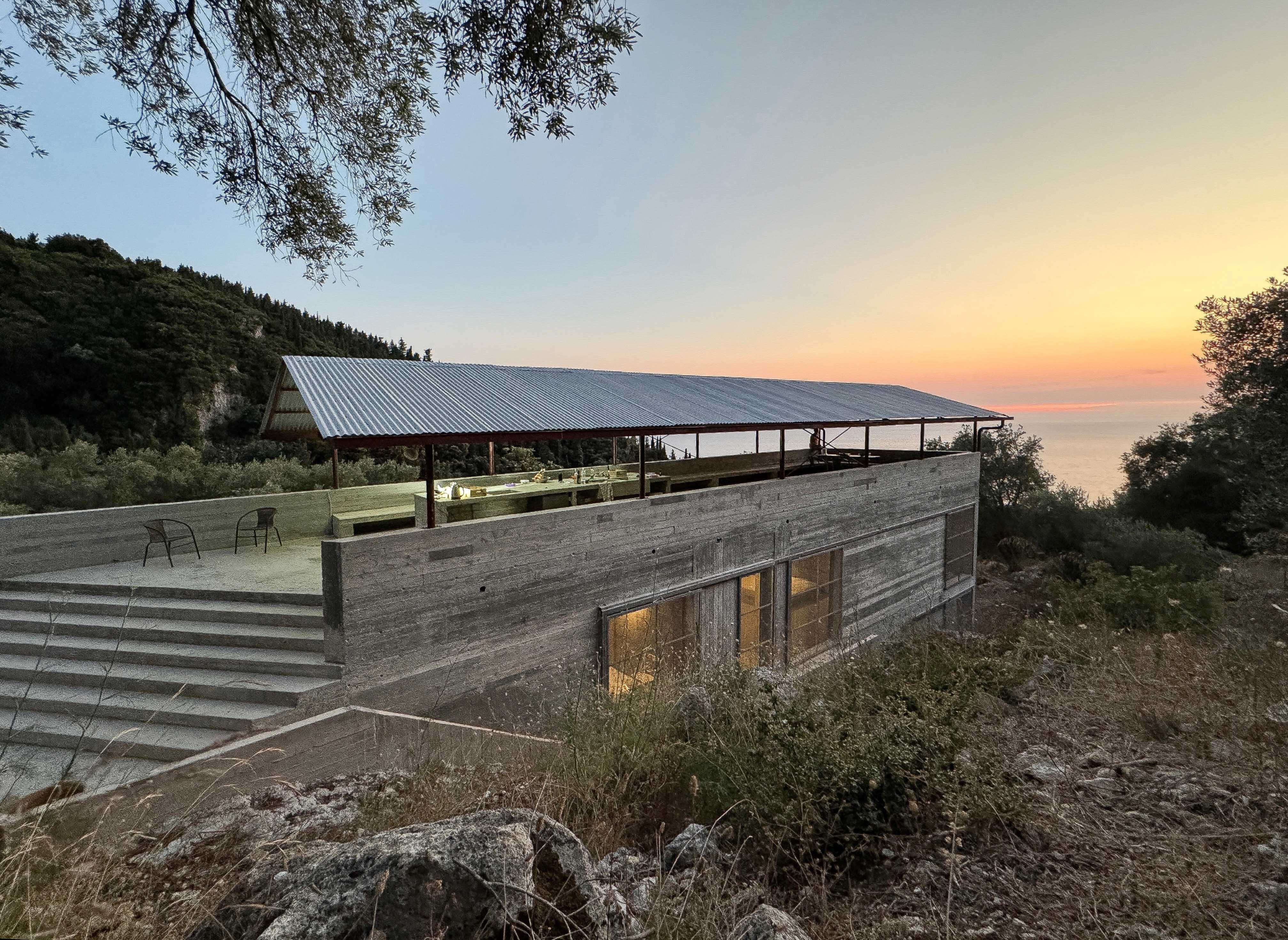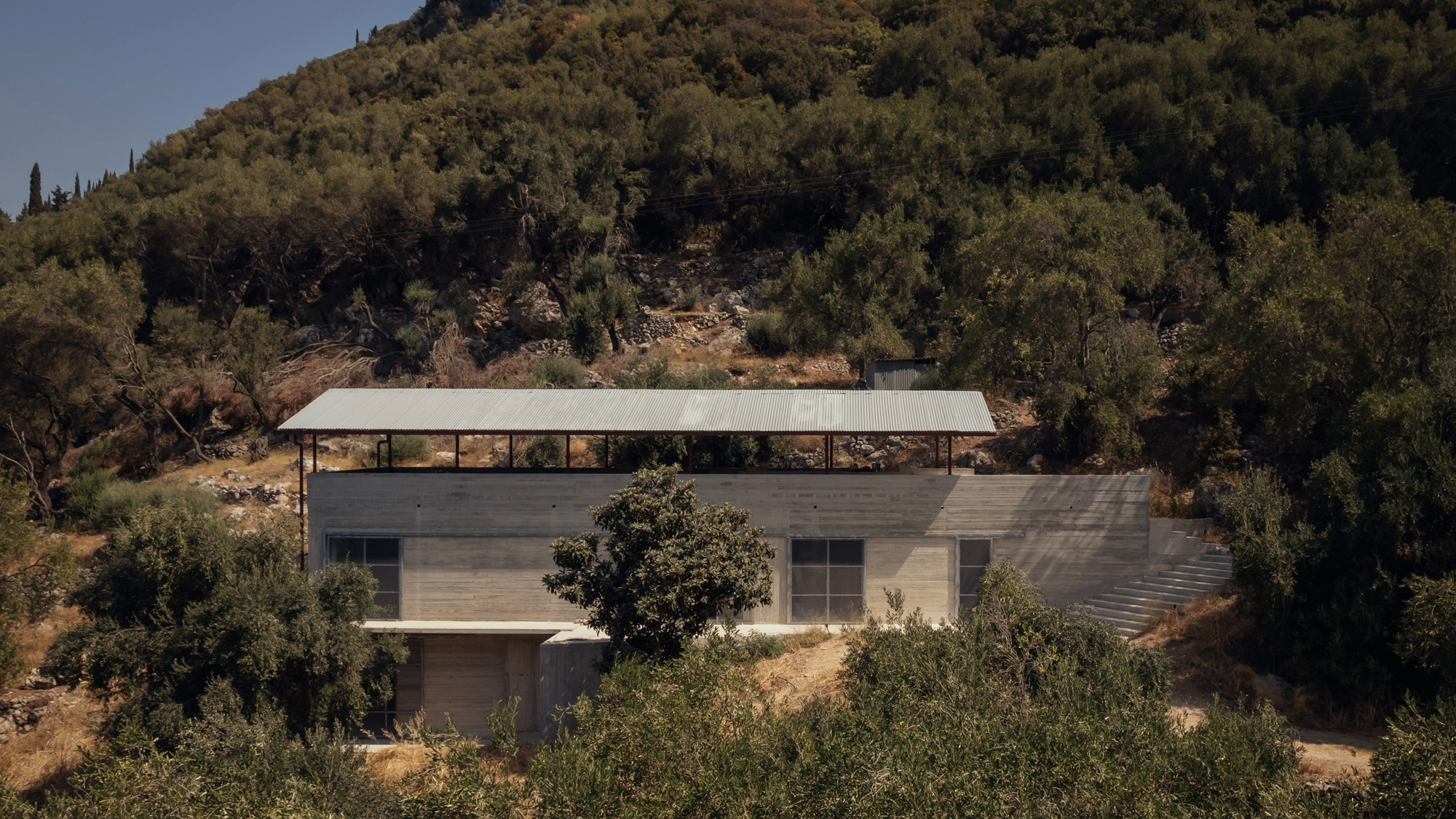
British architect Piers Taylor has been visiting Corfu since the early 1970s, and knew the island and its culture inside out when he eventually decided to build a holiday retreat for his family there, in a beautiful olive grove on a hillside. ‘I’ve been coming here all my life,’ he says. ‘The place is deep into my subconscious, so when I started to design this house I didn’t have to look around, it felt instinctive.’
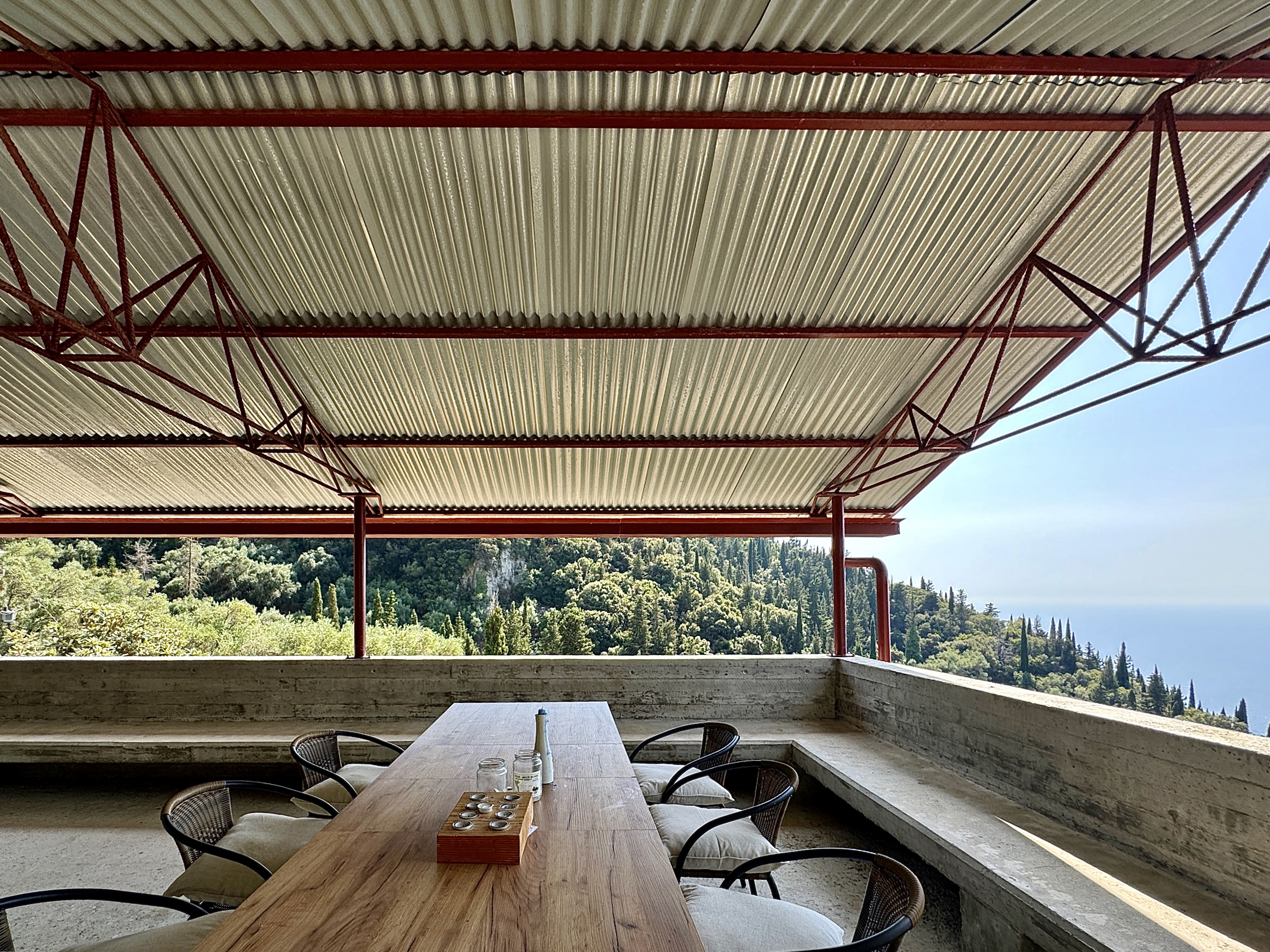
Discover Piers Taylor's bespoke island retreat
The rural plot and its olive trees were key to the design: Taylor lives in an off-grid home near Bath, Somerset and is the founder of Invisible Studio, an innovative practice focusing on experimentation, research and education and operating from a self-built workspace in a working woodland. The ancient olive grove was the perfect Mediterranean pendant to his secluded, tree-filled British bases.
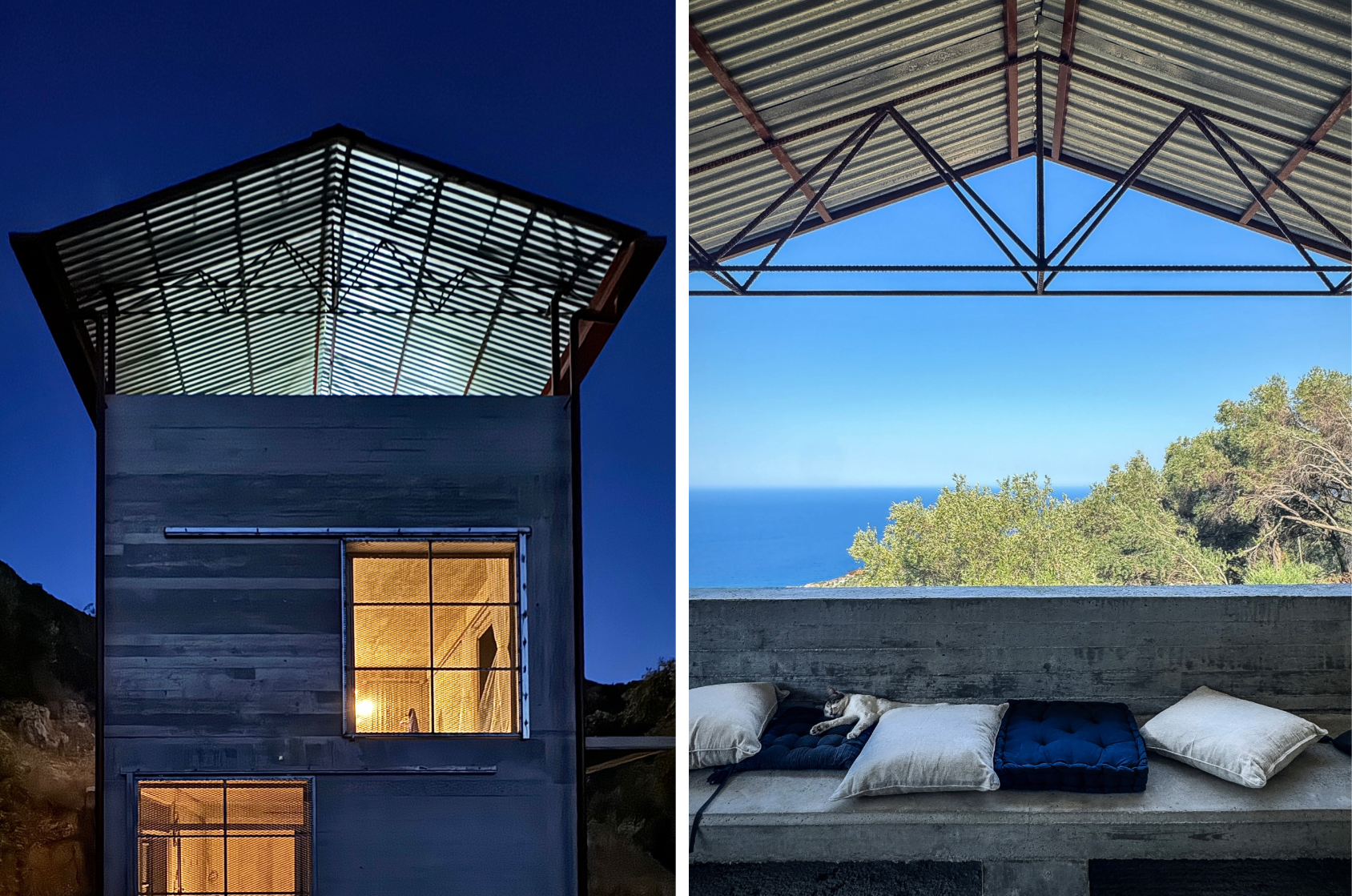
Taylor likens his House in an Olive Grove to ‘a kind of campsite’, as the concrete building features a minimalist, sometimes rough, aesthetic – a deliberate choice to create an architecture that is flexible and respectful of the local environment and resources.
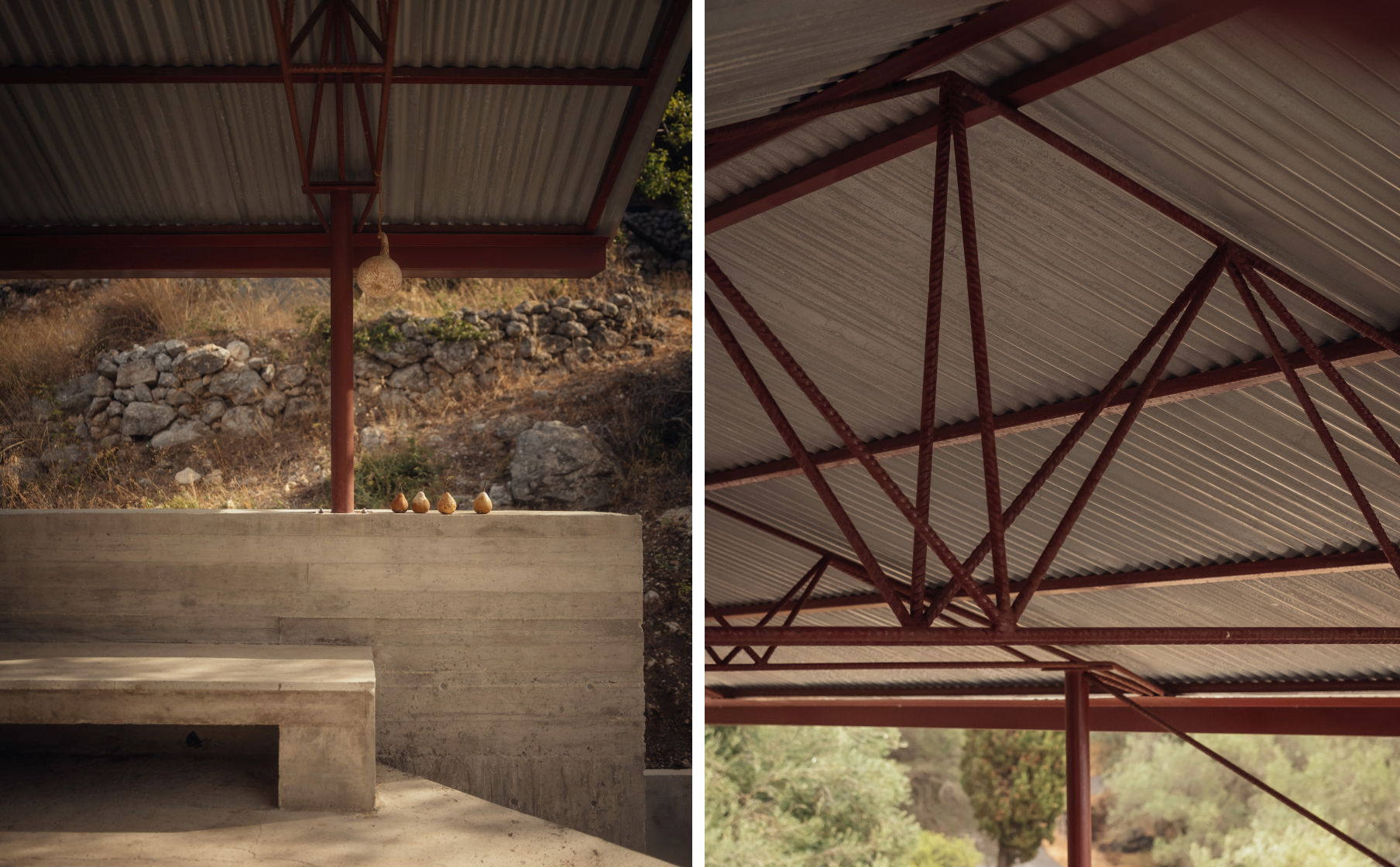
‘The greatest luxury in this environment is to be able to be outside,’ says Taylor. ‘I didn’t want to make this olive grove into a domestic environment, I just wanted the breeze.’ His new retreat draws inspiration from the island’s rudimentary structures and small agricultural buildings, as well as the work of architects such as Glenn Murcutt, who pioneered a type of climate-responsive design that is heavily influenced by the landscape that surrounds it.
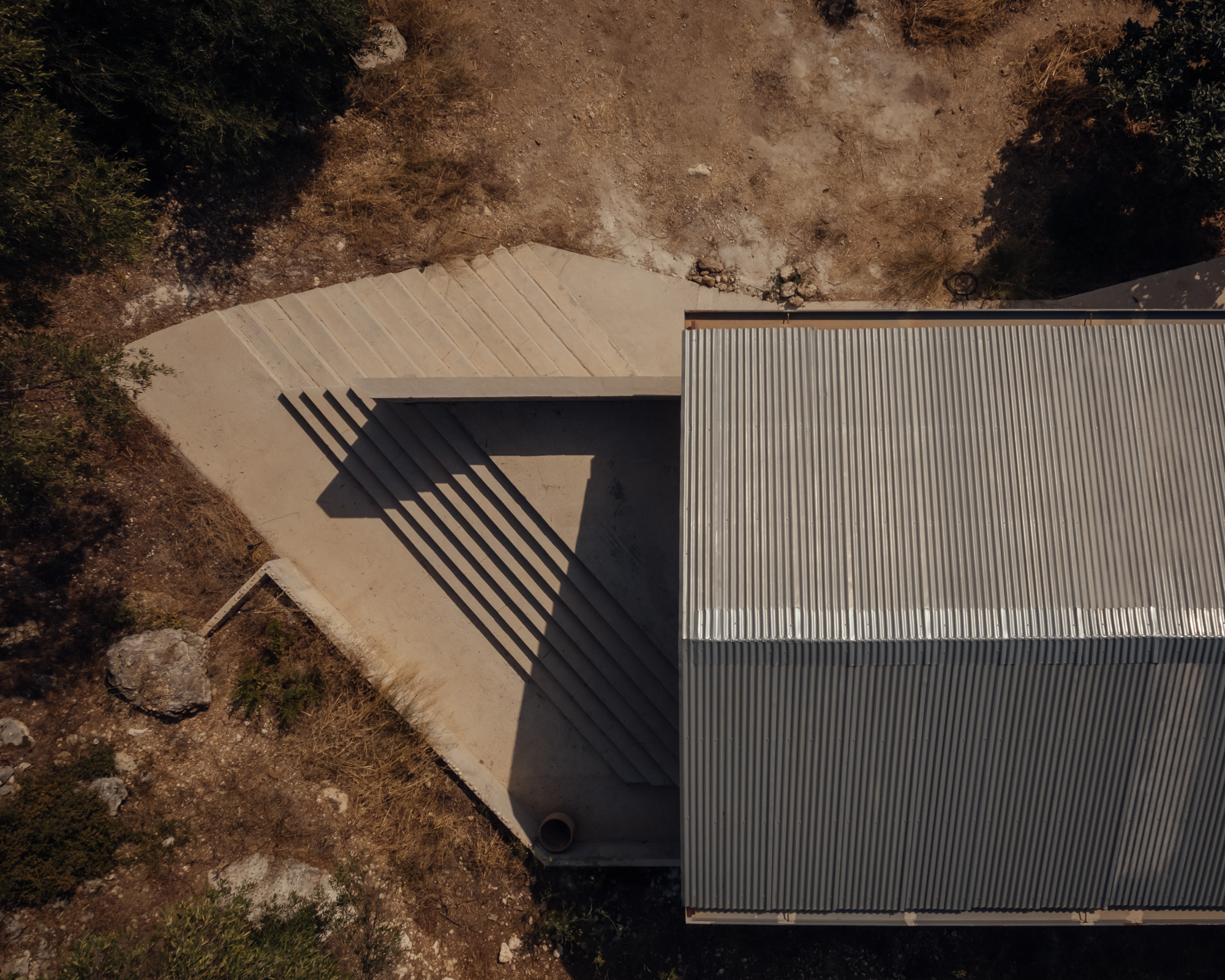
The top-floor shaded living space, complete with a concrete kitchen and built-in seating, is a terrace opened to the elements on the sides and sheltered by a corrugated roof. Below are four bedrooms and two shower rooms spread over two floors, with concrete steps running down the hillside. There are no windows here – only galvanised weldmesh sliding screens, separate sliding insect screens and plastic curtains.
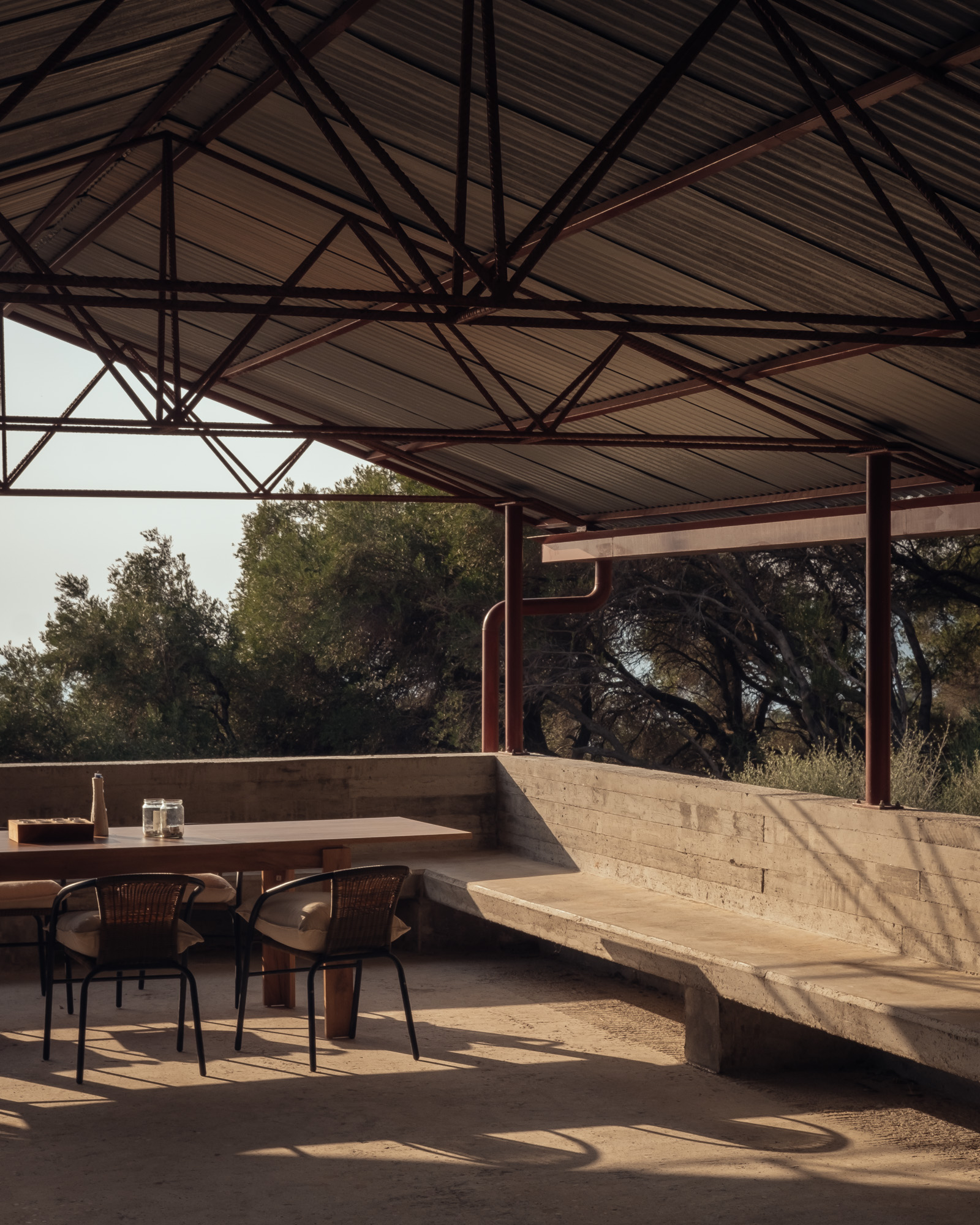
As the house is located in an earthquake zone and fire danger zone, there were limited materials to build with. The team of local builders chose materials that were readily available from the village’s hardware store and used reinforced concrete using local limestone aggregate.
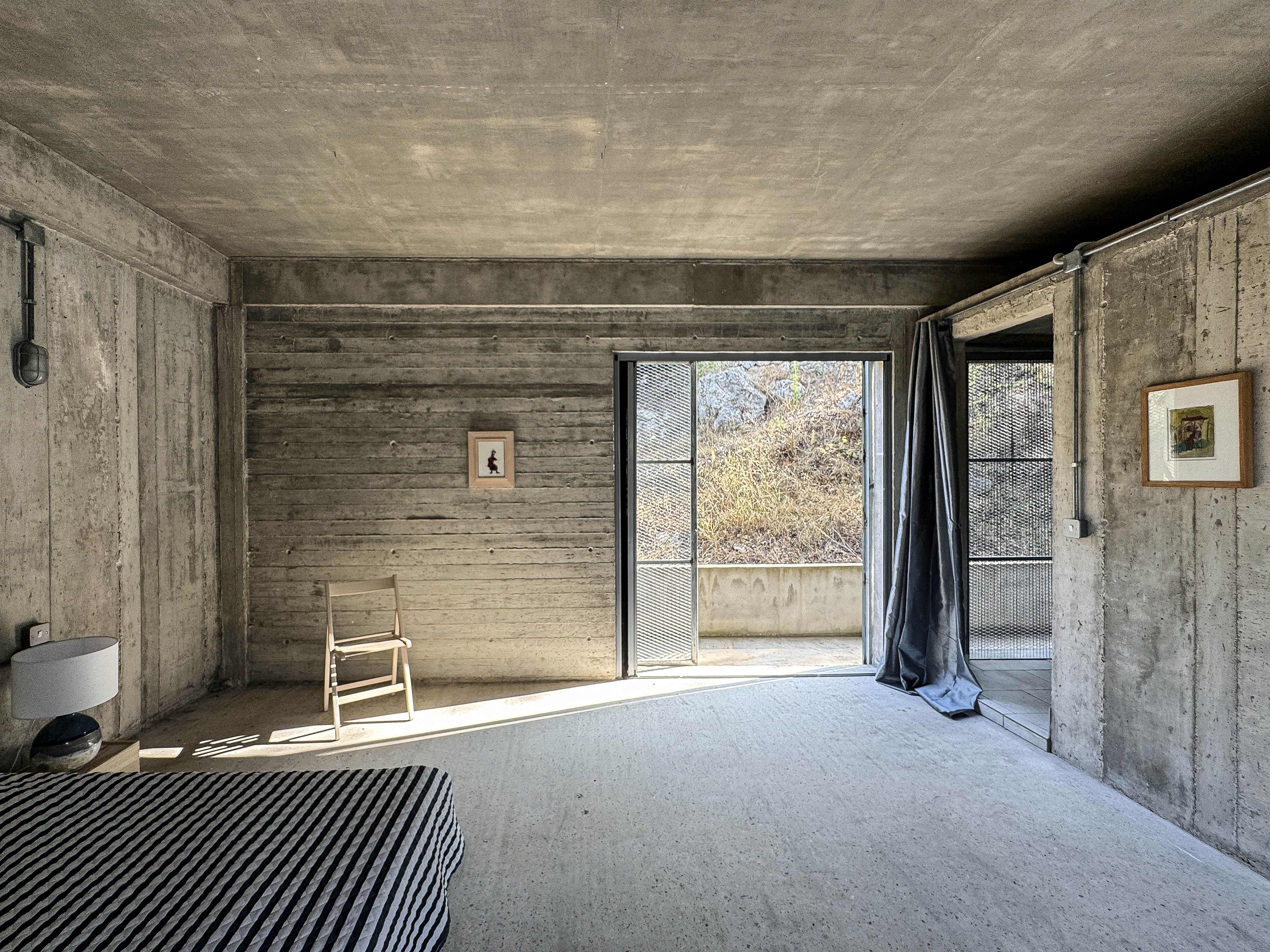
Making formwork is a key local skill, and they were given free rein on how to use it in the construction, employing either vertical or horizontal planks. The resulting patchwork ‘tells the workers’ story, not my story’, explains Taylor.
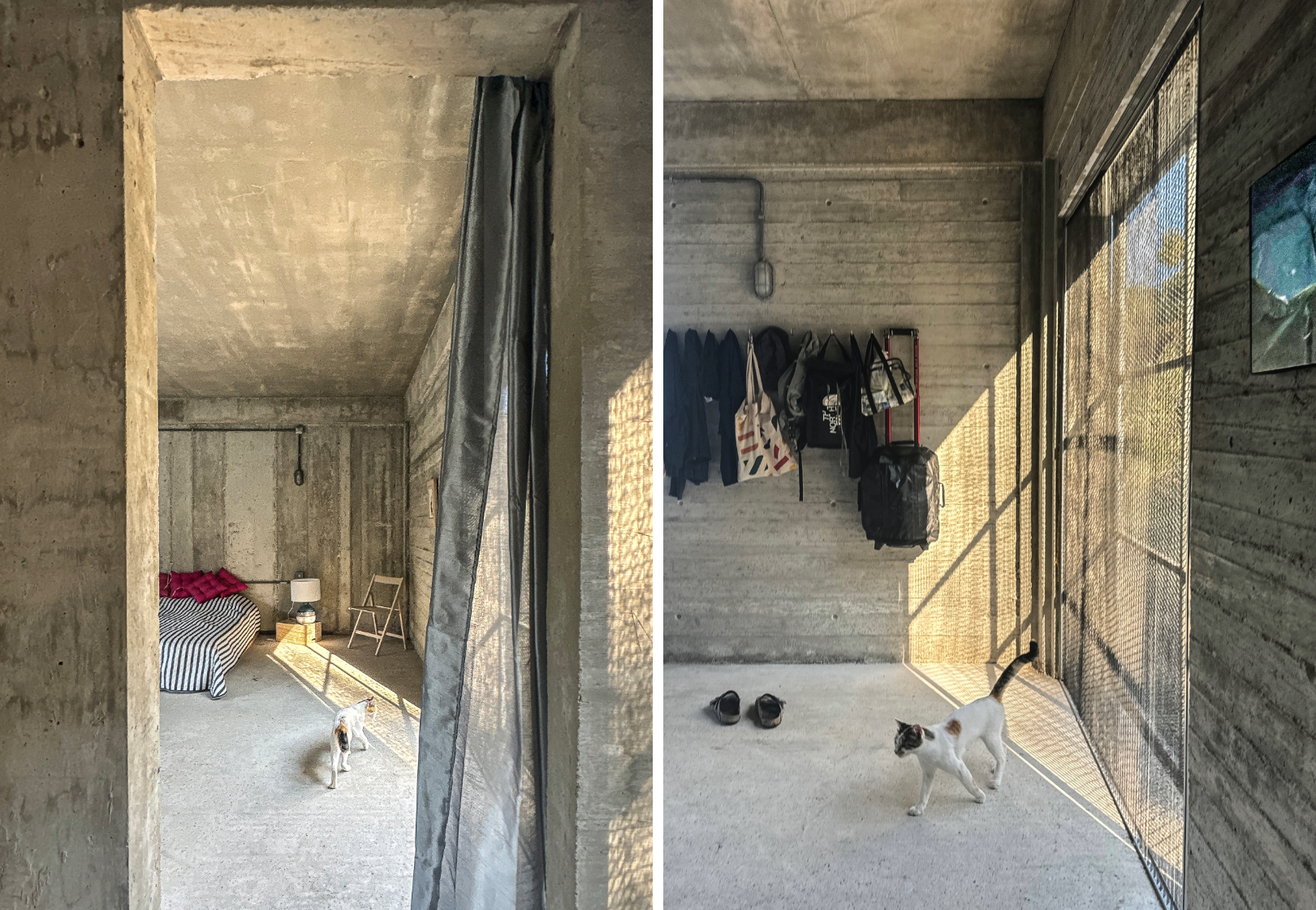
‘I wanted to create a building whereby all of the “mistakes” are made evident, meaning the processes and decisions made by the locals who built the house,’ he continues. ‘The organisation of the formwork is eccentric but has a logic and a language based around the materials they had to hand, and the sequence in which they worked.
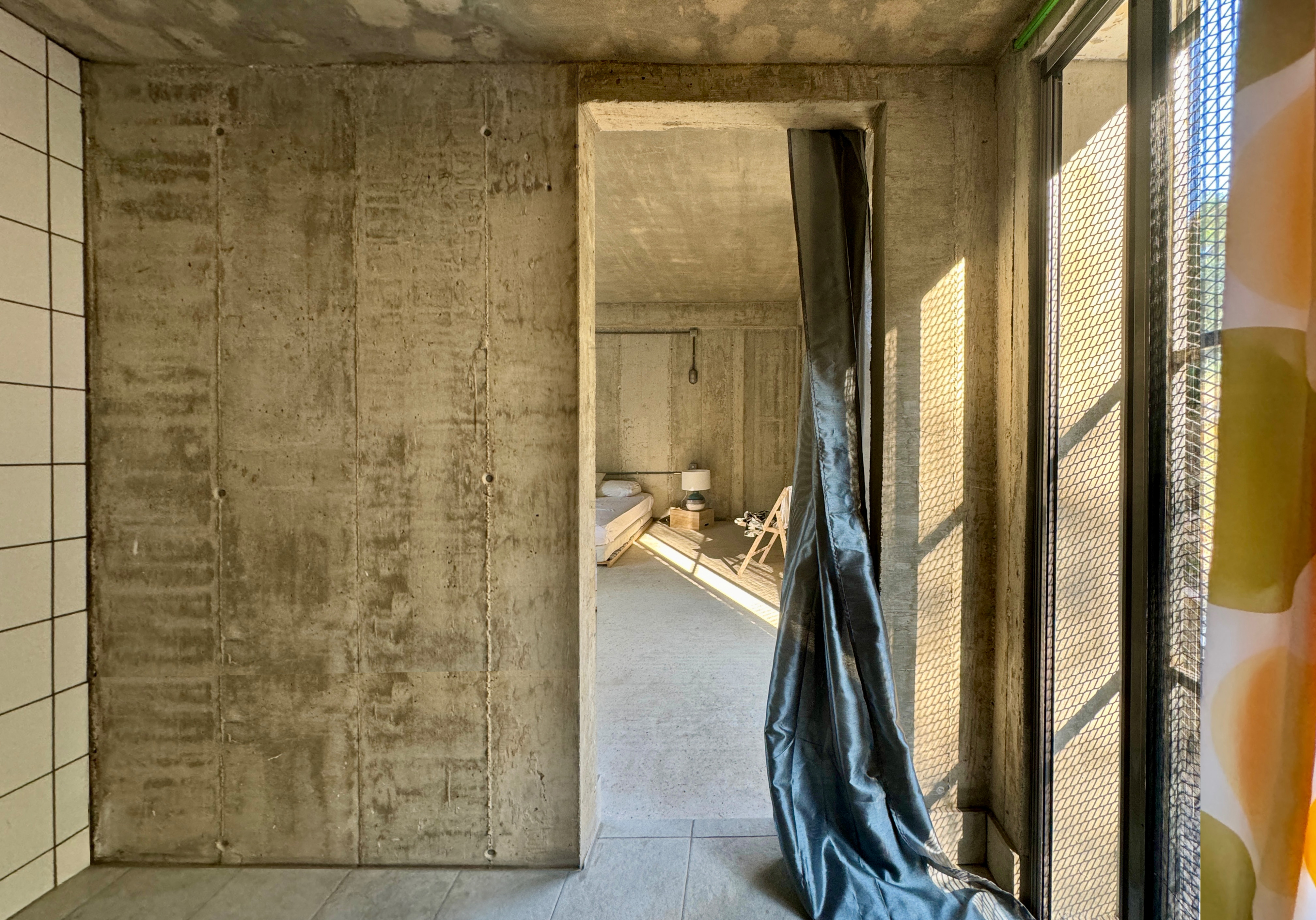
‘With House in an Olive Grove, I had an increasing sense that there was an opportunity to develop an architecture from the ordinary, the everyday and the local that is overlooked in the pursuit of the absolutely generic Mediterranean tile-roofed, cream-rendered, marble-floored villa, in a context where the local has an extraordinary specificity and richness.’
